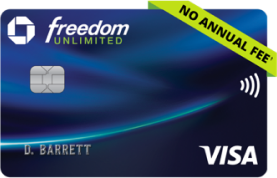![]()
![]()
![]()
![]()
How Much Loan Can You Afford in 60 Seconds
Loan Affordability is a crucial aspect of financial planning that allows individuals to determine how much money they can realistically borrow without overextending themselves.
In this article, we will explore efficient ways to assess your borrowing capacity using various online calculators.
By evaluating your income, debts, and other financial factors, you can quickly find your loan limit in just 60 seconds.
We will highlight popular tools from sites like NerdWallet and Zillow that provide valuable insights into your mortgage and personal loan options, ensuring that you make informed financial decisions.
Know Your Borrowing Power in a Flash
Before taking out any kind of loan, understanding your loan limit is not just smart—it’s essential.
Jumping into a loan agreement without knowing what you can realistically afford puts you at risk of unmanageable debt and financial stress.
That’s why knowing your borrowing power ahead of time is a major game changer.
Today’s lenders base decisions on a mix of your income, monthly obligations, credit score, and regular spending, making it critical to factor everything in.
Luckily, with tools like the ones available at NerdWallet’s loan calculator or Zillow’s Mortgage Calculator, you can figure out your personalized estimate in as little as 60 seconds.
That speed is not just convenient—it’s relevant when you’re house-hunting or comparing personal loan offers.
Having this clarity early allows you to act fast and smart, especially in competitive borrowing situations where opportunities may not wait.
Income and Earnings Consistency
Lenders closely assess both the size and consistency of earnings to determine a borrower’s ability to manage recurring payments.
Steady paychecks, such as those from salaried employment, signal lower risk and higher repayment reliability.
In contrast, freelancers or those with variable income must prove a sufficient and consistent income history to meet lending standards.
According to F1Lenders, this ensures lenders can anticipate future earnings.
Additionally, borrowers with multiple or mixed income sources often need to document income over a two-year span.
Ultimately, predictable and adequate earnings demonstrate financial reliability, improving loan approval chances.
Debt-to-Income Ratio and Fixed Expenses
Understanding your Debt-to-Income (DTI) ratio is crucial when it comes to borrowing money responsibly.
It is a financial metric that compares the total of your monthly debt payments—such as credit cards, student loans, and mortgages—to your gross monthly income.
You can easily calculate your DTI by dividing your total monthly debt by your gross monthly income, then multiplying by 100 to get a percentage.
Many lenders, including those at Wells Fargo, use a DTI of 36 percent as a comfortable benchmark for loan approval.
That’s because a DTI above that level can suggest financial strain.
However, lenders also consider fixed essential expenses like utilities and childcare, which may not count officially in DTI but drastically impact realistic affordability.
This is why staying below the 36 percent DTI threshold is often a smart move when budgeting for any new loan.
Credit History and Its Weight
Lenders closely examine your credit history to evaluate how trustworthy you are as a borrower.
Consistently paying bills on time demonstrates reliability and significantly boosts your score.
In contrast, late payments signal risk and can drastically reduce borrowing power.
Credit utilization, or how much credit you use compared to your total limit, also matters—a lower ratio improves your score.
Score ranges help lenders categorize your risk: a score above 740 often grants access to larger loans and better rates, as highlighted by Summit Mortgage.
On the other hand, poor scores shrink your options and result in costlier terms.
Getting Instant Estimates with Online Calculators
Getting instant estimates with online loan calculators is easier than most people expect.
To start, you simply need to enter your income.
This figure gives the tool a snapshot of your repayment capacity.
Next, add your total current debt.
This ensures the loan suggestion will reflect your realistic budget and obligation limits.
Then, select your preferred loan term, typically measured in years or months, and input the expected interest rate, which can usually be estimated based on your credit profile.
As soon as these fields are filled out, the calculator’s algorithm works instantly, analyzing your debt-to-income ratio along with the specified terms.
It then generates a recommended borrowing limit that’s aligned with your financial profile.
For example, tools like the NerdWallet Personal Loan Calculator perform this analysis in real time, providing guidance that’s both reliable and fast.
- Result in 60 seconds
- Objective numbers
- User-friendly interface
Using such tools not only saves time but also empowers you to visualize repayment scenarios.
By toggling loan durations or interest rates, you can simulate different outcomes and choose what best suits your lifestyle.
If you’re reviewing home financing, platforms like Zillow’s Mortgage Calculator offer intuitive interfaces that make number-crunching feel effortless.
That way, you stay one step ahead, turning intimidating figures into actionable decisions.
Free Online Tools for a 60-Second Check
| Tool | Required Inputs | Notable Feature |
|---|---|---|
| NerdWallet | Loan amount, interest rate, term | Amortization chart with detailed breakdown |
| Bankrate | Loan amount, APR, term | APRs and cost summary |
| Intuit | Amount, term, interest | Clean mobile interface great for beginners |
Selecting the right calculator depends on how much detail you want to see and how comfortable you are with financial terms.
If you prefer a simple and intuitive experience, tools like Intuit work well.
Meanwhile, options like NerdWallet or Bankrate offer more advanced features if you’re comfortable analyzing APRs or amortization schedules.
Making Sense of the Number and Planning Ahead
Once you’ve used a loan calculator to get an estimated loan limit, the next step is making sure that number fits comfortably into your budget.
Take that suggested borrowing figure and compare it against your actual monthly income, existing debt obligations, and essential expenses like rent, utilities, and food.
This step grounds the estimate in reality, helping avoid financial overstretch.
Many calculators, such as the one offered by NerdWallet’s Personal Loan Calculator, allow you to tweak terms like interest rate or repayment length to match your situation better.
After cross-checking, talk to your prospective lender to understand proposed rates, fees, and payment schedules in detail.
Use this moment to map out a clear financial planning strategy that covers the entire lifecycle of the loan.
As finance coach Mia Johnson puts it,
“A loan should empower your goals, not burden your peace—borrow only what you can pay off with confidence”
Treat that 60-second estimate not as a final word, but as a launching point for smart, informed decision-making.
In summary, understanding your loan affordability is essential for making sound financial choices.
By utilizing online calculators and resources, you can effectively assess your borrowing power and secure the best loan options suited to your needs.






